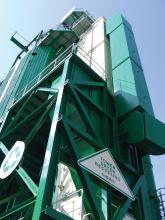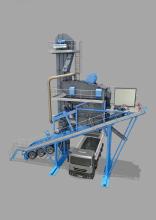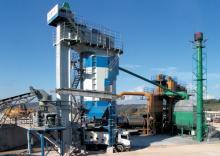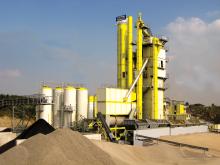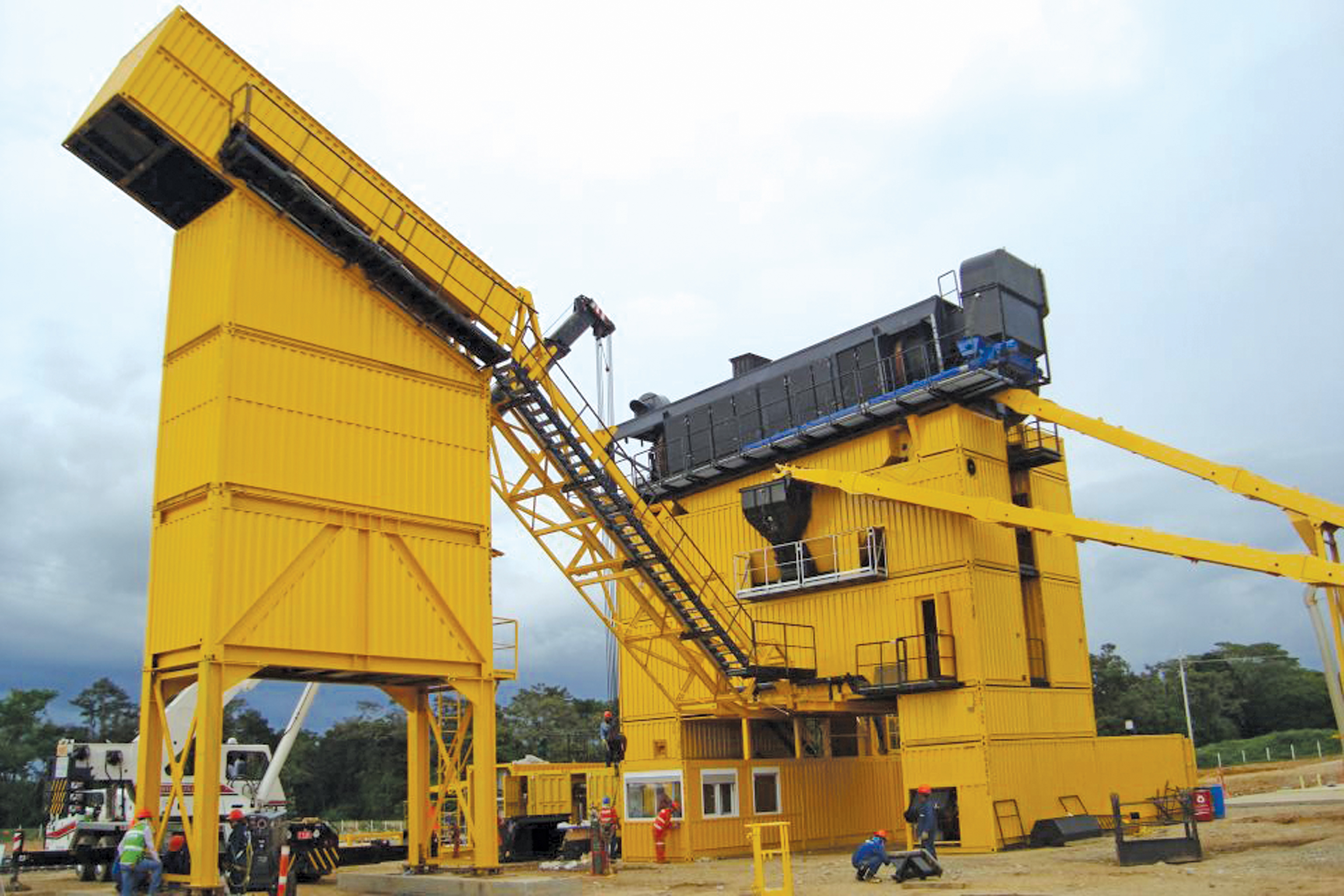
Asphalt plants capable of producing a wide variety of mixes including the increasingly popular warm mixes have recently been unveiled. Patrick Smith and Guy Woodford report
The recent unveiling of a new asphalt plant in Brazil was a source of great pride for those involved with its production.
The SB150HM (Smart Batch 150 High Mobility) batch plant from
Indeed, mobile and semi-mobile asphalt mixing plants with few transport units are the preferred choice in regions with little infrastructure while stationary, high-performance plants are often found in metropolitan areas where they meet the asphalt requirements of an entire region over decades.
The new Terex plant, undergoing final trials on an infrastructure project between São Paulo and Rio de Janeiro, can produce up to 150tonnes/hour.
The designers say it can be supplied with a system of tanks for special blends such as with a system of agitators to work with asphalt with polymers, rubber asphalt or even warm mix asphalt (warm mix) among others.
“With this project there was a huge study. We went to 20 countries to study batch plants and the requirements of the end customers to make sure we had the information,” says Mauricio Rech, Terex Roadbuilding Latin America.
Also in Latin America, Germany-based manufacturer
Lintec’s CSD 1500 has a 120tonnes per hour capacity; the CSD 2500 (160tonnes/hour) and the CSD 3000 is capable of 240tonnes/hour. All are equipped with bitumen and diesel tanks, foreign filler silos, hot storage silos and bitumen modification units and the CSD 2500 and CSD 3000 also have recycling systems.
Lintec also recently launched a specially designed and fully containerised CDD 1200 GA Gussasphalt plant, capable of producing up to 20tonnes of Gussasphalt/hour for the European Market. Sold to the French company SMAC (
Introducing its new COMPACT asphalt plant, said to create a continuous flow of multi-purpose product, including cold, warm and hot mix, is the
According to Fayat, the new plant ensures optimum energy management when mixing aggregates, while also maintaining the ability to recycle materials according to typology.
The feed is conventional into the dryer tube for virgin materials and into the continuous mixer, or both, for recycled materials.
Bitumen is introduced into the Retroflux or Recyclean dryer tube, or into the mixer, far away from the flame. The benefits of this system are said to include zero emissions and no waste.
Fayat says the bitumen does not age prematurely because it is added to virgin aggregates and RAP (recycled asphalt pavement) at an ideally controlled temperature.
The COMPACT has two introduction/mixing sequences, one in the dryer with a second sequence called pre-mixing (virgin and recycled aggregates), which features 60 seconds of mixing with the addition of bitumen and other products in a 3.5m long mixer.
Fayat has also incorporated a low mixer behind the dryer in order to have a direct feed into the mixer, eliminating the risk of time lag and guaranteeing correct bitumen dosage.
Supplied either as 100% new investment or as a retrofit on an existing plant, the versatile nature of the COMPACT system and projected savings in terms of maintenance costs are seen by Fayat as major justification arguments for contractors wishing to own a modern production tool for new material, while keeping ecological and environmental footprints to a minimum.
With the entire asphalt plant constructed on one chassis, customers are told they can expect to be producing asphalt within a day of delivery.
“Flexibility and transportability were the key design criteria,” says Bernd Benninghoven. “Our extensive market research confirmed that smaller customers wanted a compact plant that was transportable and capable of producing asphalt with minimum set up time. The Master Mix 1000 can be delivered pretty much anywhere and be producing 80tonnes an hour within
a day.”
The new UniBatch range from
“This plant type incorporates flexibility, extendibility and a larger selection of variants. The future-proof concept focuses on modularity, energy efficiency and reduced emissions,” says Ammann.
“The UniBatch model range is compatible with all of Ammann’s recycling technologies and is suitable for enclosing in housing. The modules are suitable for transportation on standard vehicles thanks to standardised container dimensions, which in turn enables short delivery times and quick assembly on site.”
With mixer options from 1.3-4.3tonnes, the range offers hot silo storage of 45–120tonnes and mixed material storage silo up to 450tonnes. UniBatch is controlled by Ammann’s as1 control system, which now has an additional module, EcoView, which shows at a glance how efficiently the mixing plant is working. It continuously records operating data and presents them in a condensed form to the mixing engineer.
“The system makes the ecological aspect of the mixing process transparent on a continuous basis by recording all the relevant energy-related data such as fuel and electrical energy consumption, CO2 emissions and costs,” says Ammann.
Turkish company Çesan says it will soon launch a new asphalt plant with features based on customer demand.
Capable of manufacturing up to 320tonnes/hour, the plant does need to be established on concrete ground, and is said to be easily transportable and quick to assemble.
It uses parts from leading companies such as Phoenix,
Meanwhile, Italian asphalt equipment manufacturer
BES is now Bernardi Impianti’s international representatives for the systems, responsible for all commercial and marketing activities for these products around the world.
The Bernardi Impianti patented Red Dryer has an internal drying system, which allows for the direct introduction of up to 50% RAP without the need for any secondary equipment. RAP can be introduced directly into the dryer from the existing cold feed system and blended with the virgin aggregates. The blend of materials is then transported through the dryer via the specially-developed internal blading and mixing system, and the mixture is heated by the innovative Bernardi internal combustor, which retains the flame and radiates heat to the materials passing through the dryer.
Bernardi says that by retaining the flame inside the combustor, there is no direct material contact with the flame, which reduces any thermic shock to the retained bitumen.
“The combination of the various elements of the Red Dryer process will provide a blend of high quality coated material suitable for passing across the screens and elevators, without any problematic blinding issues.
“This ensures that all the aggregate fractions of the RAP are separated into the individual hot storage bins along with the virgin aggregates, which will ensure the mix specification for the desired recipe, is maintained according to the relative standards required.” RSS

